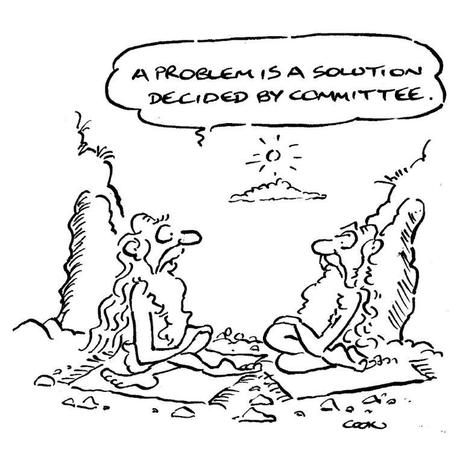

 Groupthink is alive and well, and often wrong
Groupthink is alive and well, and often wrong

I was warned at an early age. You can’t believe everything you read. And that was well before the internet was running fast and loose with the truth.
I was later alarmed to find Mark Twain didn’t exactly say reports of his death were greatly exaggerated. And to find Captain Kirk never said ‘Beam me up, Scotty’ in a Star Trek episode. And how disappointing was it when astronauts couldn’t see the Great Wall of China from space?
The problem with everybody
Stuff often sounds good. It gets traction even though it’s wrong. Next thing it’s regarded as fact. Social media put the syndrome on steroids. Even James Surowiecki, who wrote the book ‘The Wisdom of Crowds’, says for the crowd to be wise, there have to be contrary opinions within it. Independent thinkers leaven the mix, boosting the chance of wise outcomes.
Unfortunately they don’t always get the chance and the noisy often rule. Research shows people with contrary views regularly ‘go with the flow’ in a group situation, remaining silent in order to ‘fit in’.
Strong leaders who try to ‘set the tone’ actually reduce the airing of alternative, possibly better, solutions. And, rather than embrace ideas that are outside the square, group members generally embrace the most widely-held views.
Getting more polarised?
In one experiment reported in Harvard Business Review, a group of left-leaning people from Boulder, Colorado and a right-leaning group from Colorado Springs were asked first to anonymously outline their views on contentious issues then, later, to record their views after deliberating further within their respective, like-minded, groups. The result was not a leavening. Instead they moved further to the left or right, recording positions more extreme than the anonymous statements they made prior to discussing the issues.

Yet breaking ‘grid-lock’ in either politics or business strategy often requires lateral thinking and compromise. Reality is often grey, rather than something simply diagnosed from an ideological standpoint.
Encouraging the quiet
If you are looking to get the best out of your team, your best option is probably to shut up. Form your view at the end of a meeting, not at the start. Get the people who have different ideas to speak up. Applaud them for their individuality or for uncovering evidence that might be uncomfortable.
Examine their contrary view. It wouldn’t be the first time the best idea came out of left field.

Avoid ‘this is the way we’ve always done it’. It may have worked before but how do you know it will work in the future? Discuss instead ‘how else could we do it?’ Try something new. If your product or service is historically a premium one, is there a case for a lean version? Or vice versa?
The advantage of a team is diverse input, yet a group has the power to suppress that very strength. Take steps to squeeze the wisdom out of your crowd, not just out of the loud.

